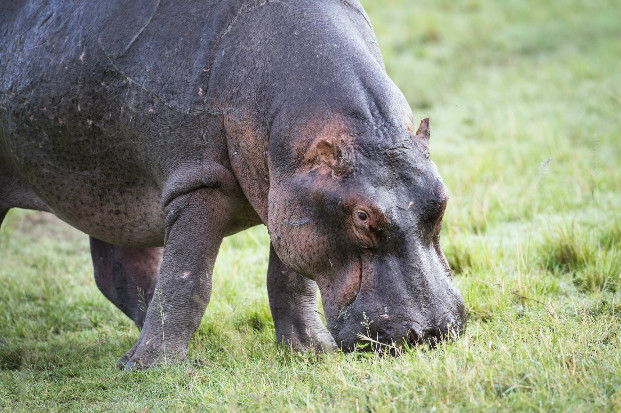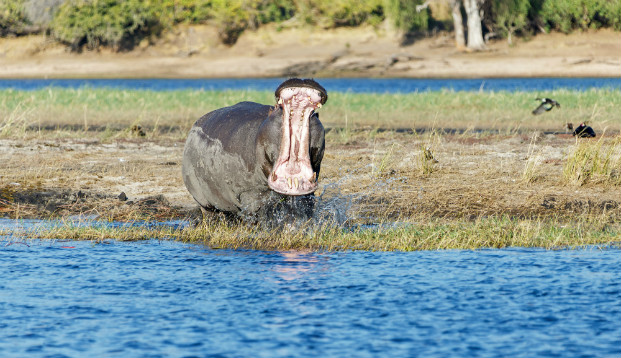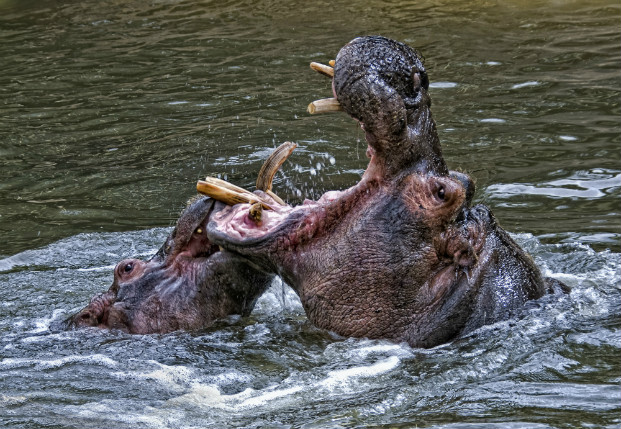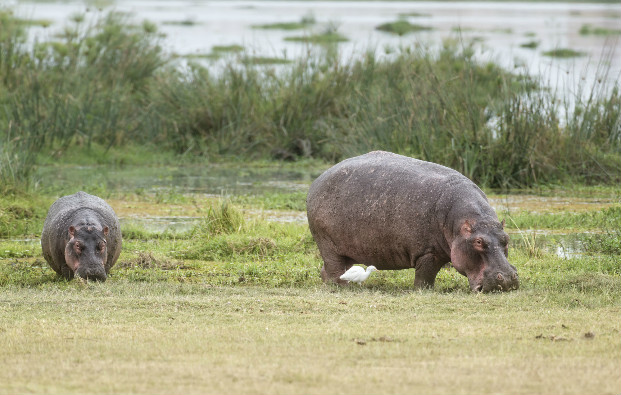The hippopotamus is unmistakable. The head is huge with an enormous muzzle. It can open its jaws to a full 150 degrees. This huge gape and power makes it capable of biting a 3m long crocodile in half. Its skin can be as much as 6 cm thick. This is invaluable in protecting itself from the dagger like canines of opposing hippos. If threatened a hippo can run between 30 and 36 kph. The word hippopotamus is derived from the Ancient Greek word for “River Horse”.
Vote for the fact you find most fascinating
A hippo requires shallow water so that its back legs can touch the bottom whilst it sleeps. It then automatically rises to the surface to breathe before sinking below the surface again.
Because the water supports the hippo’s body it expends less energy. As a result it eats very little, just 1.5% of its own body weight compared to an expected 5%.
Hippos secrete a red fluid from mucous glands. This dries like a lacquer to act as a sun screen, prevents water loss and is believed to protect wounds from infection.
Territorial bulls will come together at the common boundary where they will stare at each other before showering one another with dung and urine which they do by shaking their tails.
A baby hippo will suckle under water. To make this possible they fold their ears back and close their nostrils. This is an automatic action and even happens when they’re suckling on dry land.
The hippos tusks are long hooked canines in its lower jaw that continually grow. These can reach 50cm in length and are sharpened by rubbing against the upper canines.
Hippos cannot swim. Instead they walk along the bottom of the river bed and propel themselves forward in the style of an astronaut on the moon using their tail as a rudder.
A hippo can remain under water for up to six minutes. This is made possible by lowering its pulse rate by two thirds.







